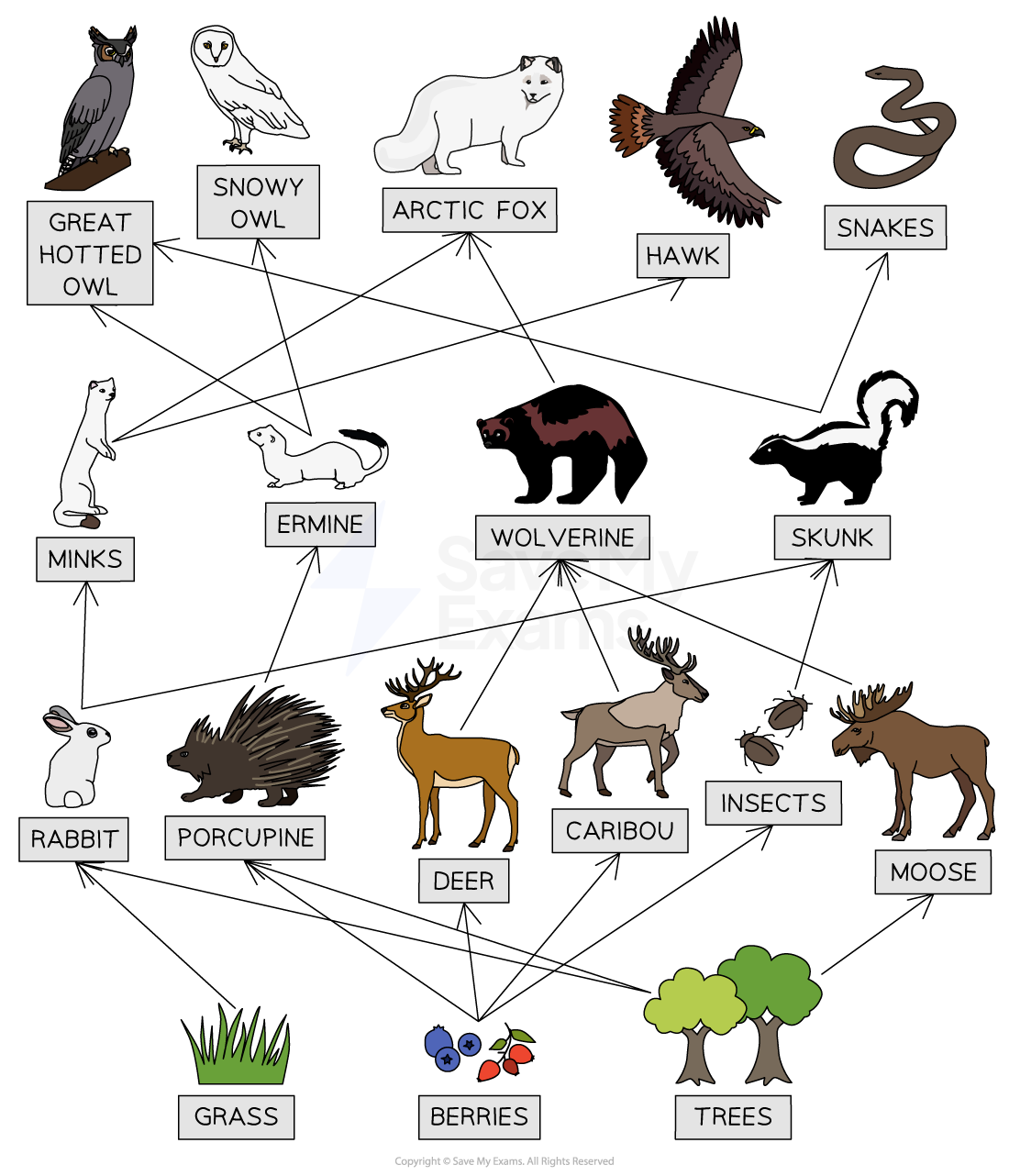Taiga (Edexcel GCSE Geography B): Revision Note
Exam code: 1GB0
Taiga Characteristics & Adaptations
The taiga makes up 30% of all forested areas in the world
All parts of the taiga ecosystem are interdependent
A change in one part affects others
The interdependence of the taiga components means that when one element is affected it then impacts all the other components
A decline in one species (especially if it is a keystone species) can lead to a decline in other species
Salmon are a keystone species in the taiga
They provide an essential food source for bears and wolves
Wolf diets can be almost 50% salmon
If the salmon are affected by disease or can no longer migrate back up stream due to a barrier like a dam, the food source is depleted
This impacts on the wolf population
Scots Pine is another keystone species
Squirrels, voles and mice rely on the pine cones as a food source
The deep ridges on the bark provide habitats for many insects as well as lichens and mosses
The insects provide food for many birds and small mammals
Reduction in the numbers of Scots pine can have a dramatic impact on the food web
Plant and animal species populations may decline
Taiga climate
The taiga has:
Long, cold winters (January average -10oC)
Temperatures can reach -50oC
Short, wet summers (July average 15-20oC)
Summers only last three months
Low levels of precipitation (380-650mm annually)

Adaptations of Plants and Animals in a Taiga Climate
Plants | Animals |
|---|---|
Needle-shaped leaves: the needle shape and waxy covering reduces water loss (transpiration) and frost damage | Thickly oily fur: moose and bears have thick oily fur which helps to keep them warm |
Cone shaped: this helps the trees shed snow in the winter | Hibernation: a number of animals including the brown bear, chipmunks and squirrels hibernate during the winter months |
Flexible branches: bend so that they don't break under the weight of the snow and allow the snow to fall off | Migration: some animals migrate to lower latitudes during the winter months, such as the Canada goose and caribou |
Wide, shallow roots: avoid the frozen ground but are wide to support the trees and anchor them in strong winds | Feet: the taiga is often snow covered and some animals feet are adapted to move quickly and effectively through the snow. Caribou have large hooves and the pads turn hard in winter |
Seeds in cones: the cones surround the seeds to protect them from the intense cold | Summer and winter coats: to ensure camouflage in both winter and summer some animals have brown fur/hair in summer and white in winter such as the snowshoe hare |
Taiga has a low level of biodiversity
The cold, dry climate means that the growing season is limited to a couple of months
There is only one layer of vegetation - trees, with mosses and lichens growing on the trees
The soil is highly acidic
Nutrient cycling is slow which leads to slow plant growth
Worked Example
Study Figure 1,

The diagram shows how coniferous trees are adapted to their environment.
State how two of these characteristics are adaptations to the environment.
(2 marks)
Answer
Triangular/conical shape – protects tree from damage from heavy snow (falls off) (1)
Evergreen – allows instant photosynthesis in short growing season as temperature rises (1)
Needle like leaves - reduces transpiration (1)
Cones – protect seeds from intense cold (1)
Wide shallow roots – allow tree to survive above permafrost in shallow soils (1) or anchors tree in shallow soil to survive strong winds (1)
Taiga Nutrient Recycling
The cold and dry conditions in the taiga mean that nutrient cycling is slow
Growing season is short and there are limited sunlight hours
The stores and availability of nutrients are small
There is a lack of chemical weathering due to cold conditions
The largest store of nutrients in the taiga is the litter because the organic matter decomposes very slowly
The soil is acidic
Plants grow slowly due to the short growing season
This means that few nutrients are stored in the biomass
Net Primary Productivity (NPP) is lower in the taiga

Food web
As in all ecosystems the taiga has a food web which includes:
Producers
Primary consumers
Secondary consumers
Tertiary consumers

Worked Example
Study figures 1 and 2,


Explain why the taiga forest biome has very low levels of productivity
(4 marks)
Answer
Productivity is the rate of energy production (1) long cold winters (1). limited sunlight hours (1). lack of nutrient availability (1) nutrients largely stored in litter (1) are all limiting factors (1) which lead to low levels of productivity (1).

Unlock more, it's free!
Did this page help you?